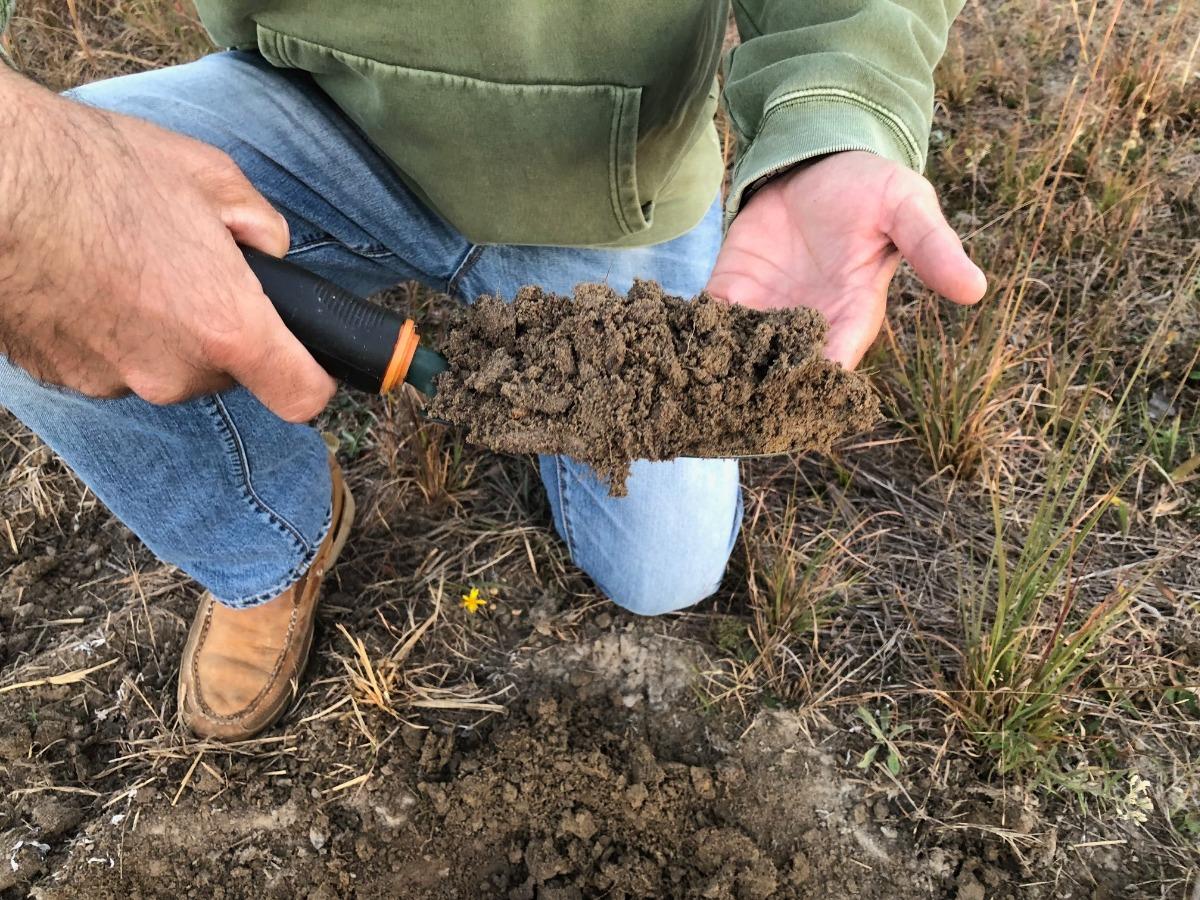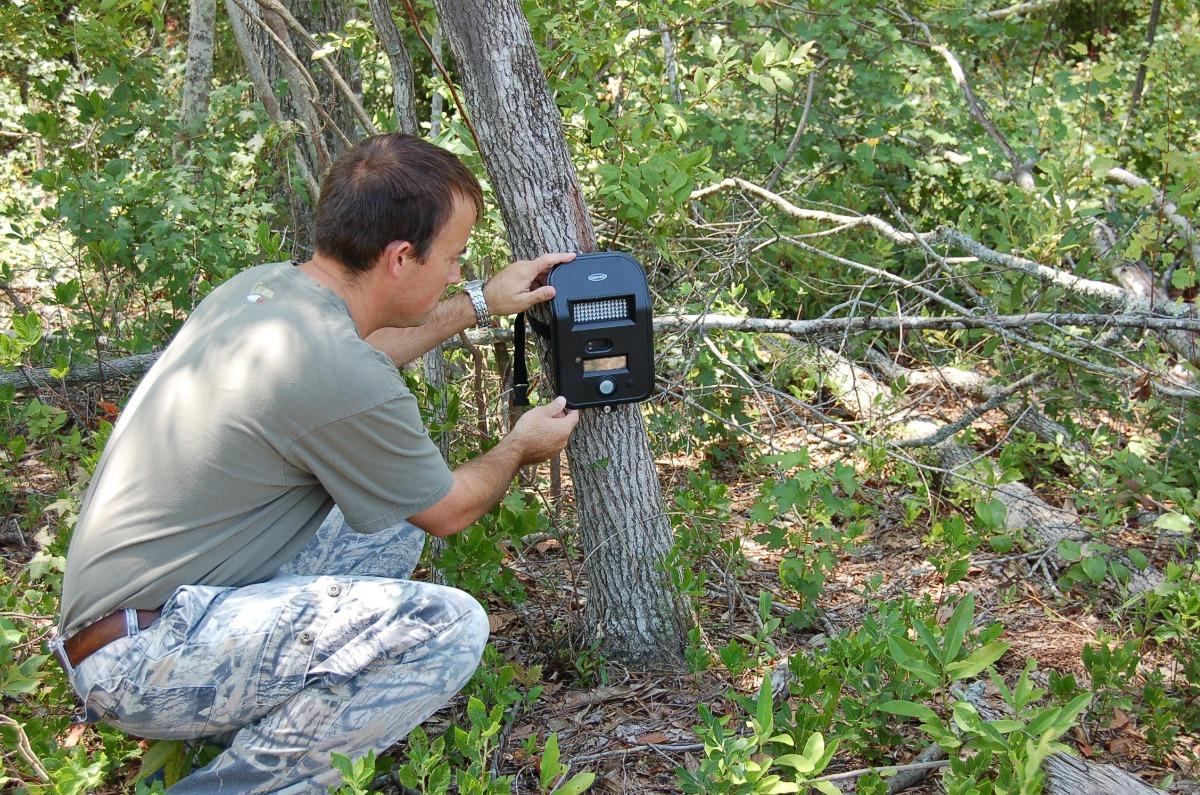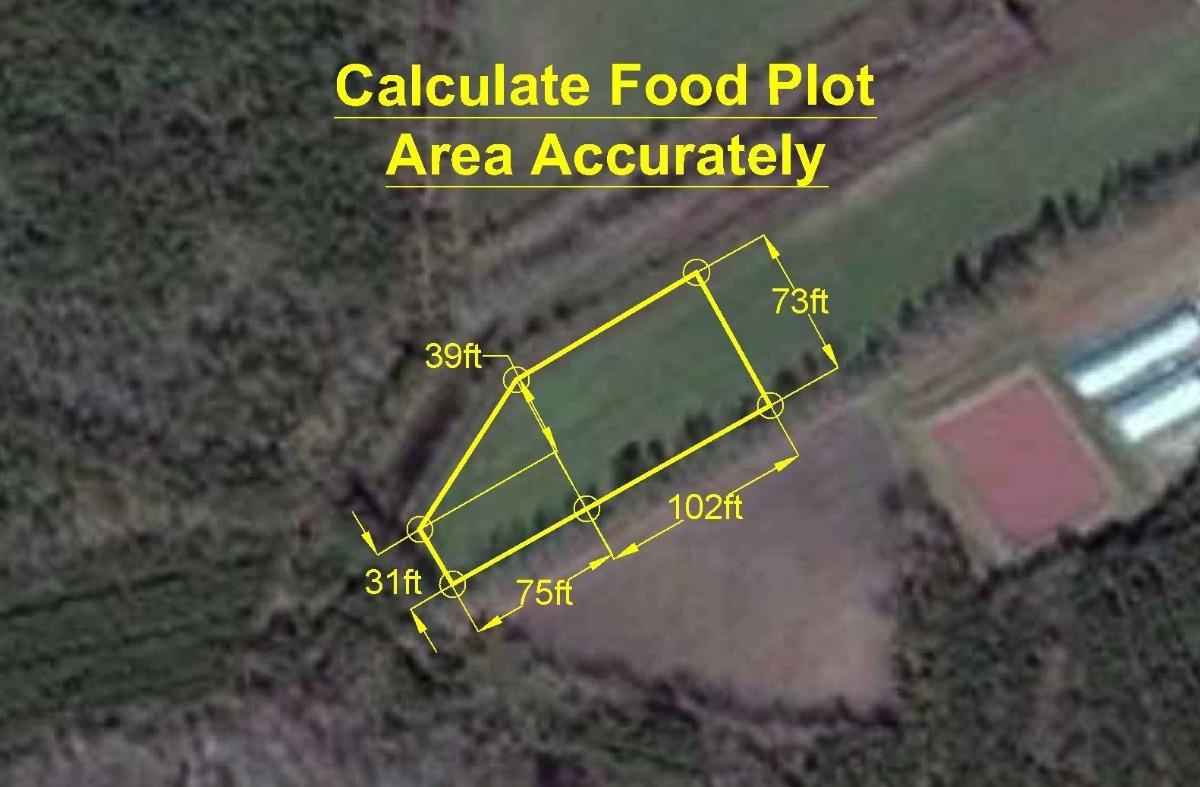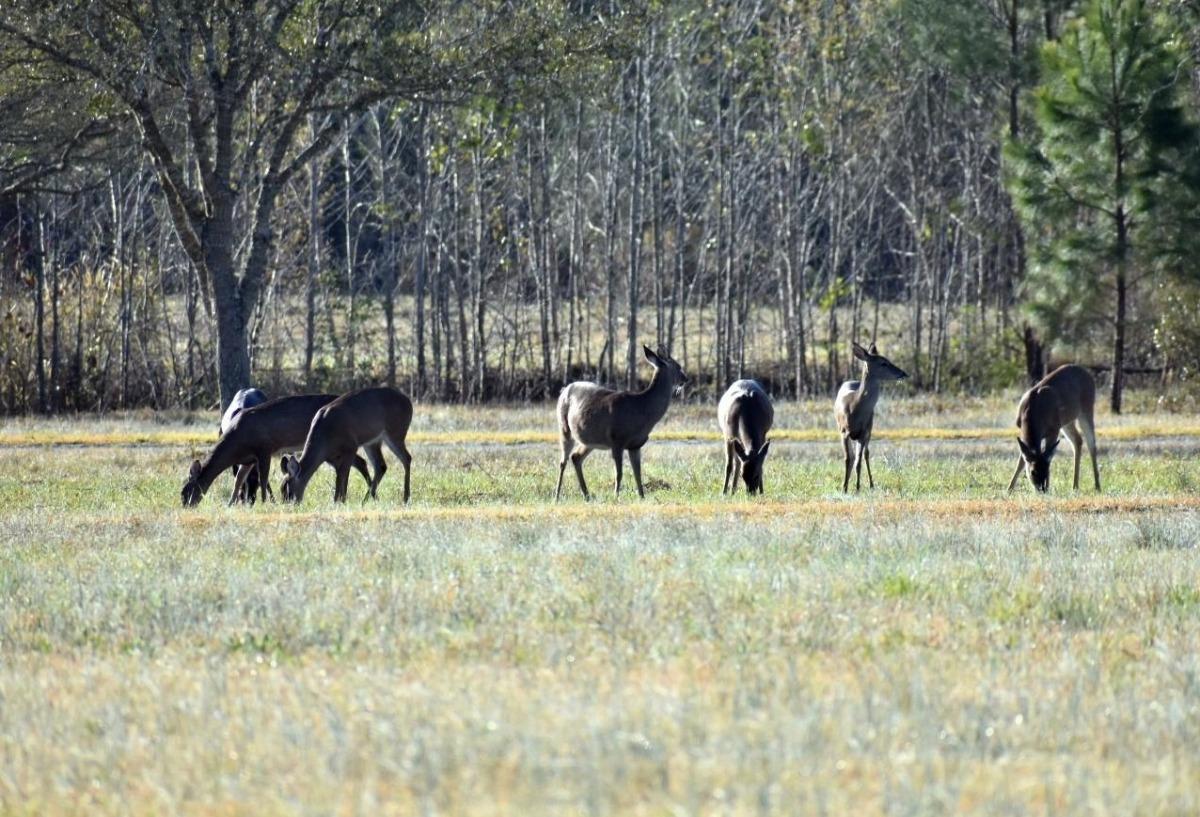Knowledge Center

Paradise at last! The south is littered with opportunities to have healthy wildlife populations with the chance for a record book trophy buck or wild turkey, a mixed bag of migrating ducks, and the chance to take a modest limit of bobwhite quail, rabbit, squirrel, and wild hog. Any wildlife manager on any size piece of land from 25 acres to 25,000 acres can improve the health of wildlife residing on their property and to attract new species to the property through habitat management, habitat manipulation, and farming.
The “Knowledge Center” will delve into a variety of tactics
and techniques for enhancing your wildlife habitat on your property, such as:
seasonal plantings, habitat management, pesticide/herbicide use, fertilization,
soil preparation, artificial nesting structures, habitat manipulation through
forest management techniques and other “farming for wildlife” techniques.
People can assist wildlife by creating habitat that better meets certain
species’ needs. Whether fish are considered wildlife or not, they are just as
much fun to manage and catch. Pond management techniques, including harvest
prescriptions and habitat manipulation will appear regularly as well.
Wildlife populations can be manipulated on a tract of land through wildlife management with ease. So what is wildlife management anyway? The definition of wildlife management is basically “the application of scientific knowledge and technical skills to protect, conserve, limit, enhance, or create wildlife habitat and to regulate harvest.” All aspects of this definition are important, but more times than not regulating harvests gets most of the attention under the primary premise of managing the animal and its harvest will improve your herd. While harvest restrictions are the easiest to control, the “scientific knowledge and technical skills to protect, conserve, limit, enhance, or create wildlife habitat” takes considerable more effort for the manager, but will improve the overall health and diversity of the population of critters on the land.
Wildlife and habitat management is a year around endeavor. Each month of the year allows for various tasks to be executed to reach the overall objectives.

Every hunter that invests their
time and money in a food plot program wants to see results in more ways than
one. As the fall season arrives, hunters would love to see a large-racked
mammal making regular visits into their food plot where blood, sweat, and tears
has gone down. Ultimately, most hunters hope to shoot a nice deer in their
plots. But most habitat managers will credit their hard work as successful when
a solid source of nutrition is created and is being used regularly by their local
deer herd. In order to create these nutrient-rich meccas, it all starts at the
ground level, literally! And that is with a soil test, but what do all of these
numbers mean?
Everything grows from the dirt and having the right chemical composition will directly affect the outcome and the potential uses by wildlife. A soil test is the first step to creating an ideal food source for wildlife. Soil tests allow hunters and property managers to make precise and accurate soil amendments to create the ideal chemical environment for their intended food plot plans.
Plants require a specific chemical environment to survive and thrive. Whether growing peanuts, corn, or soybeans in Williamsburg County or bright, green turfgrass on one of the world-famous golf courses in the sandhills or N.C., soil chemistry is the starting point.
Soil tests are about as inexpensive as a hamburger combo at one of the national fast food chains and very easy to collect. But, after the soil test results return, how should one interpret them and use them to their advantage?
The test results produce lots of numbers that can look foreign for people not adapted to reading these reports. While all the reported numbers contribute to the success of the crop, there are several key numbers on the report that will have the largest impact to the crop’s outcome.
The pH and the buffer pH should be the first two numbers one should pay close attention to on the report. The soil pH is the groundwork for all chemical reactions in the soil. Plants need nutrients and the specific pH of the soil determines what soil nutrients will be soluble and usable to plants and what nutrients will be held unavailable. A soil pH of 7.0 is considered neutral and anything less is considered acidic. Most agriculture plants flourish when soil pH is slightly neutral or between 6.5 and 7.0.
The buffer pH value illustrates
how adding lime can effectively raise the pH to desired levels. Buffer pH is
produced in the soil laboratory after a controlled alkaline solution is added
to the soil sample. The difference in the soil pH and the buffer pH values will
determine how effective a lime treatment can adjust the soil pH. A wide range
between the soil pH and the buffer pH essentially means a lime treatment will have
a dramatic effect on raising the soil pH. In contrast, a small difference
between these two values means lime treatments will have a small effect on the
soil pH.
The amount of organic content and the soil texture directly determines the effectiveness and prescribed interval of lime treatments and the buffer pH values. Soils high in organics and clay content in the soil have a high reserve acidity that take longer to convert to higher pH’s with alkaline solutions but will take fewer lime applications after pH’s values have been adjusted to preferred conditions as compared to sandy soils. A well-drained sandy soil will have quick response to adding lime but must be added frequently due to important chemicals leaching out of the root zone.
As a general rule of thumb, both
sandy and clay soils will need recurrent lime applications over time. However,
sandy soils can receive an annual burst of a quick-liming product 30-45 days
before planting to have a positive affect on soil productivity. But, clay-based
soils should be limed using slow-release dolomitic lime in several split
applications every few years.
Again, soil chemicals react and form compounds in the soils that can be either soluble or insoluble for plants. And most soil chemical compounds are more usable to plants when located in a near neutral pH environment. Generally, the soil chemicals are reported in pounds per acre and most soil laboratories provide an indicator chart to show if the levels are deficient, sufficient, high, or other relative factor language.
Fortunately, the soil laboratory reports have an easy button that gives landowners a recommendations summary to help assist in application rates. These are given in per acre amounts and some reports even show the recommended rates for specific plant groups, such as: legumes, grasses, brassicas, etc.
Soil testing is an economic, but a vital component to all food plot preparation schedules. And the reports can be easy to interpret when the basic components are understood.

FIRE UP SURVEILLANCE SYSTEMS IN LATE SUMMER
Pre-season surveillance can provide
hunters with an endless amount of information to improve their upcoming hunting
experience. From buck inventory and movement patterns to trespasser
identification and food plot surveillance, trail cameras are an important part
of unraveling the big picture. Few hunters these days operate anymore without a
series of trail cameras.
For many hunters and outdoorsman, the
summer season is beach, lake, or river time. While there is nothing more
refreshing than taking a dip into the local watering hole after a long day at
work, the middle of summer is primetime to prepare for the upcoming deer
season. Deer season may seem like an eternity away around Independence Day. But
the August season arrives quick for South Carolina hunters and North Carolinas
archery season begins just after Labor Day.
Hunters should take advantage of any
available time and collect as much pre-season camera footage as possible to
improve their fall experience. Trail
cameras can provide endless data on food plots, trails, agriculture fields,
mineral licks, main trail crossings, water holes, and more.
Trail cameras can provide valuable
data year-round. While the approach of hunting season draws most users, the preseason
will provide excellent herd and dietary data for deer enthusiasts. Seasonal
food preferences and travel patterns will help hunters understand deer habits
of the off season and where to be when the harvesting time arrives.
Deer rely on a variety of natural
foods throughout the year, and they will migrate seasonally to take advantage
of those foods, as well as water sources. Camera surveillance will show usage
of natural feeding areas, warm-season food plots, and seasonal agriculture
crops. By July in the agriculture belt, fields of peanuts and soybeans are
primary feeding zones for deer. Both does and bucks congregate within these
grocery stores in summer prior to the breeding season.
Summer water holes are often omitted
as a place of interest for deer. But water holes are critical for deer and
other wildlife in the heat of the summer. Deer must thermoregulate and water
consumption is one of the only methods deer can regulate their body temperature
other than panting. Heat can take its toll on furbearing animals and water
sources remain a critical component to their survival in the summer season
especially. In places with limited water supplies, deer and other wildlife will
take refuge near these water holes and can be seen here daily that makes them a
perfect place for a remote camera.
Whitetails are social animals, with a
social hierarchy that takes all year for individual deer to understand their
place in the herd. Subordinate bucks, 1 ½- and 2 ½-year-olds, are often noticed
traveling with a group of older, more mature bucks. Camera surveillance can
begin to target bachelor groups as early as June, but camera data is usually
better received toward the end of summer and July is a prime time to gather information
about the herd. Photo documentation of these bucks allows hunters and wildlife
managers to identify individual deer for developing the upcoming harvest
schedule.
An aggressive summer surveillance
program can allow managers to catalog over 80 percent of the resident bucks on
their property. Without the super-charged hormones flowing in male and female
deer during the mating season, deer are more likely to maintain a daily routine
during the summer, and deer/camera interception is more likely. Rich food
sources bring even the biggest of bucks out of hiding, especially when hunting
pressure is absent.
Cameras should also be moved around
every week or two to capture and inventory as many deer as possible. Alternatively,
purchasing additional cameras is also a valid option due to the increasing
value and low cost of cameras in todays marketplace.
If new
cameras aren’t in the budget or if the camera inventory is more than enough,
the cameras will need to be dusted off and checked for adequate functioning
before erecting in the field for a long season of use. All cameras should be
tested to make sure they are triggering and taking clear photos. There is
nothing worse than setting out cameras and coming back to check them and
realizing the camera wasn’t functioning. Every photo taken can be a critical
component to any surveillance system.
Camera securement can also be a problem especially on the more experienced models in the collection. Camera straps and bungees often dry rot or become stretched over time and will require replacement. But the real killer can be battery power. The old batteries are most likely in their last few rows of life and need to be replaced with fresh batteries. For the best results, lithium batteries should be used in order to gain a full season-long usage.

For most Carolinians, the deer season is up and running this
time of year in one form or another. Either under a primitive weapons option or
the regular firearms season, the month of October offers hunters with an
opportunity to take down Bambi right when the seasonal cool down takes effect.
While many food plots are flourishing and becoming hammered by deer this time
of the year, some hunters are still behind the eight ball and still trying to
get their ducks in a row to have a hot food source for the season. But it is
not too late to plant something that will quickly bring deer in by the dozens.
Whether considering time, energy, or flat-out cash money,
food plots are investments for hunters. And the best plots result from forward
thinking many months before the deer season begins with soil tests and a series
of land applications over time. But again, life can get in the way forcing some
hunters to mobilize at the last minute. Luckily, hunters can quickly turn some
dirt and plant a last-minute crop to get quick attention from the local
villagers.
Even though hunters can prepare a quick kill plot this time
of year, there is no time for procrastination and seeds need to get buried now
for the best opportunity to take advantage of the pending rut that begins within
mid-October.
So, what is the best thing to plant? Well, each food plot
variety or seed mix will have a wide range of maturity schedules and when deer
prefer to eat these varieties. Obviously, something that takes 120 days to
mature with frost-free days is probably going to be out for an October planting
unless the chosen crop is highly attractive during the early days after
planting and the growth/palatability meets the short-term objectives.
Bottomline, the objectives of the plot should be considered,
and most fall plots are designated as kill plots or plots designated to attract
deer into a hunting area. Even when some plots are intended for short use, some
plot species can withstand heavy browsing and can flourish throughout the
cooler months offering a long feeding opportunity.
If a hunting plot is the immediate objective and it normally
is when plots are getting planted in October, there are more available options
out there that most hunters could imagine for a late season planting. In fact,
plantings that struggle with pre-mature browsing are excellent candidates for
an October planting, if the user understands the probable results.
Most legumes can be an excellent choice because they are
typically highly palatable as soon as they erupt from the soil’s surface.
Austrian winter peas, iron clay peas (or cow peas), and soybeans are
immediately palatable and highly attractive to deer during any time of the
year. Deer absolutely love these seeds, but they will barely see the light of
day because deer will hammer these crops as soon as they sprout. And yes, this
a bad thing if the objective is to grow them out to maturity. But if the
objective is to hunt over something the deer absolutely love and will eat them
as fast as possible, that sounds like a good place to hunt over in mid to late
October.
A plot of legumes filled with peas and soybeans can be over-seeded
at a high rate because of the short duration of expected use. Just be ready
when these are planted because the deer will show up with a fork and knife as
soon as these green sprouts erupt from the soil surface. Yet, if these plants
are able to survive, the forage is full of protein and highly palatable. So, if
these plants survive and withstand heavy browsing pressure, these plants can
provide an extended forage base.
Another option and probably a longer lasting plan are cereal
grains like triticale, wheat, rye, and oats. These plants are highly attractive
shortly after planting and can provide forage throughout the winter months even
when the temperature plummets to seasonal lows. And they can withstand heavy
browsing pressure as well.
The last and best option is to plant a mix of all of the
above including a bag or two of peas and beans, and then a bag of cereal grains.
These mixes can provide immediate use from emergence and anything that can make
it through the heavy browsing and the cool weather will provide a longer
lasting forage base.
These October plantings may not provide a field of dreams
with chest-high soybeans and peas but hunters can sure count on an attractive
food plot to overlook when the rut is in full effect.
For the best results, a nearly neutral pH is preferred where
the food plot’s rapid growth can be rocket fueled with fertilizers loaded with
heavy concentrations of N-P-K. The closer to a neutral pH the more effective
fertilizers can be. A fertilizer heavy to nitrogen should be used for these
types of plots to fuel immediate growth regardless if legumes are being planted
or not.

Determine Correct Plot Area for Efficient Applications
It’s that time again for cooler weather, leaves
changing colors, and the whitetail rut getting cranked up. While some groups
get an early start in August and September to fulfill their food plot dreams,
the majority of hunters start tilling up the dirt in early October. It’s a busy
session for hunters looking to quickly establish a field of greens because
their prime hunting days are eminently approaching.
Crunch time is here and if hunters are going to have a food plot, there is no time to waste. Hunters can have a lush fall plot, but it doesn’t mean that hunters should rush and make careless decisions either. One of the major planning mistakes is improper application rates of seed, fertilizer, and herbicide. Most food plots are constructed in old wood lots, old fields, or anywhere there is some open ground. And quite often, food plot areas are a result of guesswork.
Becoming a food plotter is much like farming, but on a much smaller scale. For farmers, the area of their fields is the most important consideration for every activity during the production of their crop. In addition to the massive costs from fertilizer, lime, herbicide, and the latest engineered seed, farmers know the exact survey area of their crop fields and they ensure that they prepare their field applications based on the finite area.
Every bag of seed, fertilizer, and herbicide has recommended applications rates and they are all based on an area unit of measure, either per acre or per square foot. Many food plotters just guess their plot size and make applications based on their educated guess. And this can work fine if they make an accurate assessment of their food plot area. However, a poor guess can destroy expectations of a lush plot where they hope to take a trophy buck later in the year.
Luckily, area and rate calculations don’t require an advanced degree from a private Ivy League college. Measuring area is real simple math that is first taught to third and fourth graders. But, math doesn’t always come easy to everybody. Fortunately, there are only a few steps to follow to accurately calculate the area for a food plot of any shape.
First, the units of measure need to be explored to
be able to compute distances over to usable areas. In America, the imperial
system is used over the metric system to measure and convey amounts that
include feet, acres, and yards. Since most measuring devices measure in feet
and application rates are based on acres, landowners should choose measuring
devices with feet as their primary unit. Additionally, many measuring tapes
come with inches or tenths between the foot measurements. For ease of
computation, measuring tapes with tenths between foot measurements are
preferred because it requires less calculation to reach a final product.
Area formulas can range from a real simple length-times-width calculation to a more complicated version, such as the area formula for a circle with a computation of its radius and a mathematical constant. But for almost all food plots, the area can be calculated by using the simple square and triangle formulas. The area of a rectangle is a simple length multiplied times the width. The formula for a triangle is basically the same as a rectangle, but since it only has three corners versus four, you have to half it. In other words, the formula for a triangle is the base times the height multiplied by 0.5.
When multiplying foot measurements together, the result produces a square foot measurement that can be easily converted to acres. Since there are 43,560 square feet in an acre, the square foot product can be divided by 43,560 to produce the area.
Food plots should be sketched out on paper and then segregated into rectangles and triangles if needed. The lengths and widths of each smaller rectangle and triangle should be accurately measured on the ground, marked with a stake or flag, and recorded on the sketch. Then, the areas of each subordinate region should be calculated and all added together to come up with an accurate and precise calculation for the entire food plot area.
While physical measurement with a roll tape is the most accurate way to determine a food plot’s area, areas can also be measured with a hand-held GPS or from web-based programs that have accurate aerial views like Google Earth or ESRI’s ARC-GIS Explorer.
Food plots come in all shapes and sizes. Most landowners construct food plots with irregular shapes that can make measuring area a little longer process than just a standard rectangular shape. But, coming up with an accurate plot area will make product and seed applications more efficient and precise.

December Foods Critical for Deer
By December, most hunters have killed their trophies and
loaded up the freezers with venison steaks, sausage, and enough burger to feed
an army. But the deer season is long from being over. And the last 30 days can
be one of the best times to take that big ‘ole buck that has eluded daylight
encounters all season long. The best way to get a big deer to come back around
is to bring him a something to eat and maybe even entice a lingering bed mate
to a dinner date in a field of green.
Beginning in August and September, the Carolina deer seasons
are some of the longest in the country. Most hunters bag their bucks either in
pre-rut during bachelor group season or right during the peak of the rut when
does and bucks are on their feet nearly the entire day and night. But
everything slows down and most does will be bred by Thanksgiving if not
earlier.
December is a unique time when hormonal rushes are subsiding,
and a different need becomes painfully apparent. Deer have expended a ton of
energy over the last few months and fat reserves are depleted. With the season
shifting into winter, the drive to eat increases with every passing day. High
quality food sources or really any reliable food source can pull deer in from
all over during the December season. And all the natural food sources are
becoming more and more scarce.
It is not just the does either coming into reliable food
sources. Mature and immature bucks that remain on the property will seek out
solid food sources this time of year. And they will come in the day or night.
That old buck that has eluded hunters all season long will slip into these food
sources and gobble up as much as they can. Hunters should not be surprised
either when they come in during the middle of the day either. Even though these
deer have been busy chasing each other all season long, they have also noticed
when hunters are coming into the woods and a daytime visit isn’t off the table.
Deer are famished and want to eat.
The quickest and easiest way to get deer to pile into a
stand area is always going to be supplemental feeding. Corn, sweet potatoes, soybeans,
or any other quick-energy source will bring deer in from afar and will keep
them feeding for many hours of the day. But the deer will eat it about as fast
as you can dump it out especially when nighttime temperatures drop below
freezing.
The fall food plots can be hot spots this time of year
especially when white clover, brassicas, or other cool season dominants are flourishing
and providing ample nutritional options. But quite often, food plots get hit
hard and can be diminished by December. A new food plot may sound like a waste
of energy in December, but certain seeds can flourish this time of year and
provide a solid food option for deer in winter.
Luckily, soil temperatures remain moderate and are still providing
a good list of options. Yet, one of the best fall options for immediate returns
is ryegrass. This quick green-up option will germinate nearly immediately and
will erupt from the soil surface in 36-72 hours. Planting rye is an inexpensive
option too. Rye grass can be broadcasted over a mildly worked seedbed at a rate
between 50 to 100lbs per acre. Rye grass seed ranges some in price, but its
generally sold for around $1 per pound that demonstrates it as an inexpensive option
for a late season planting.
For best results, seed should be lightly covered using a
chain harrow by only covering seed approximately ¼ to 1/8th of an
inch. It’s always good to apply some fertilizer at planting to provide ready
nutrients. While there are specialized fertilizers available, any balanced
fertilizer at a rate of 200 pounds per acre will help jumpstart this seed and
provide the necessary nutrients for a quick green up.
Rye grass is easily digestible for deer and it provides 15
to 20 percent crude protein. Rye may not be as tasty as yellow gold, but they
sure will flock to a newly emerging crop of rye in December. And fortunately,
rye grass prefers cooler temperatures and will grow all winter long and into
the spring season.
December may not be the perfect time of year to plant food plots or to hunt deer. But is it? For the diehard trophy hunters out there, December can bring big rewards to hunters with dedication in the woods because that mature buck may just step out on a newly planted rye plot with food on the brain.







